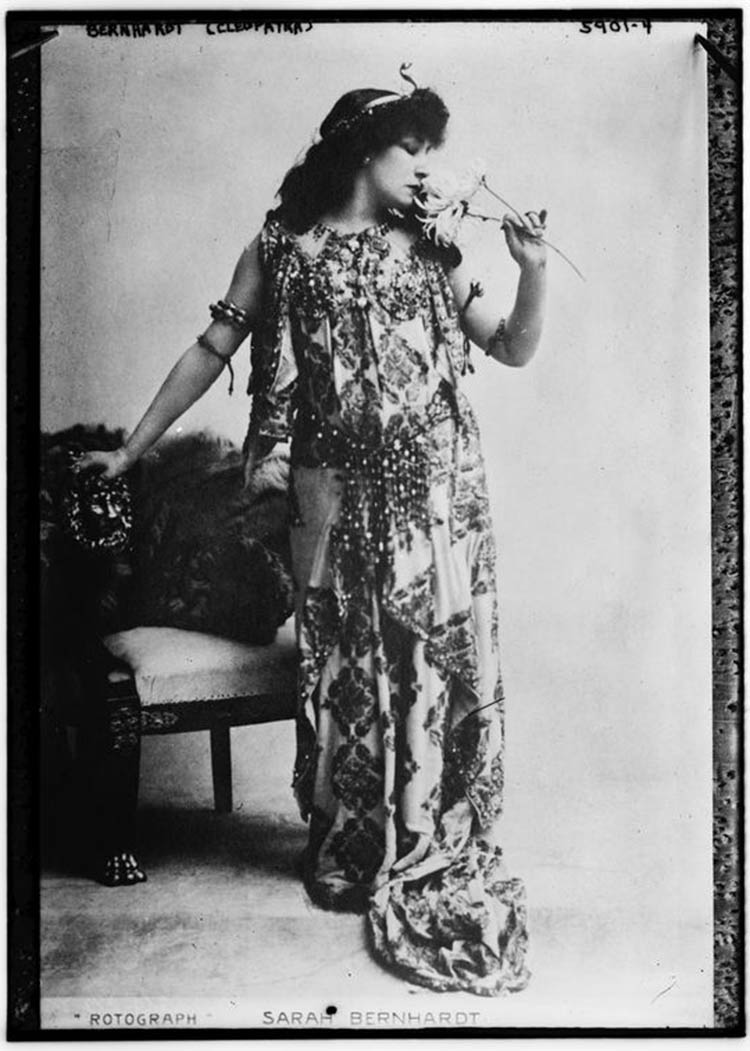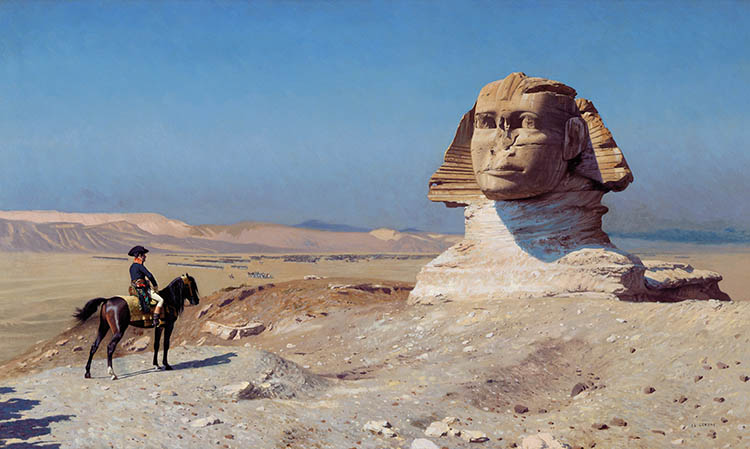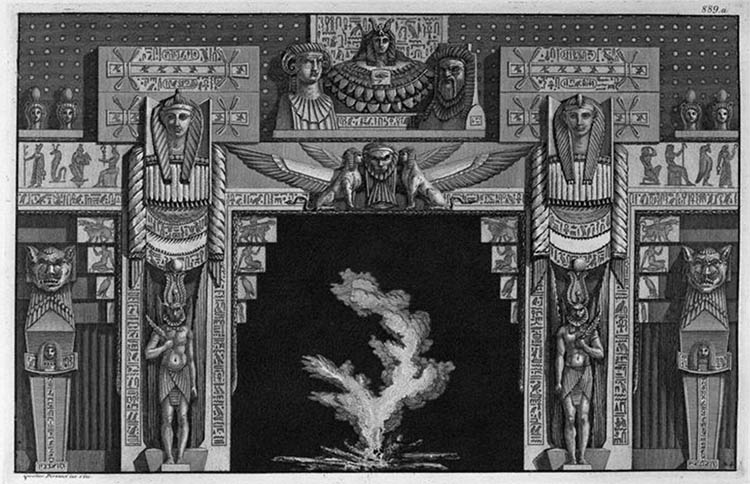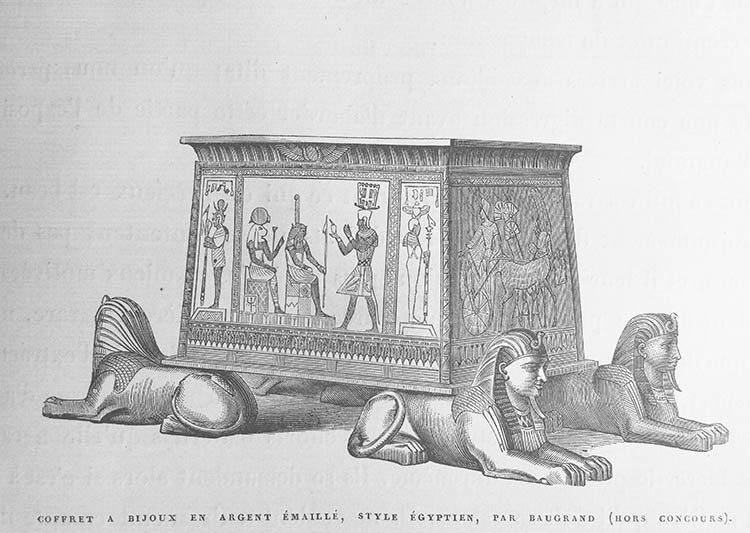Egyptomania
Download PDFEgyptomania is a unique phenomenon in Western art, it sprung from the fascination for Pharaoh's Egypt culture and history. This taste appears regularly in history. During Roman times, Egyptian items are also present in the first cabinets of curiosities of the 16th and 17th century. But it was during the French campaign in Egypt (1798-1801) that the art of the pharaohs begins to fascinate artists and collectors. This fascination continues to this day, for example with the Louvre pyramid inaugurated in 1989, or the one at the Luxor Hotel in Las Vegas, opened in 1993.
Egypt had already inspired Rome with sculptures and obelisks, which would then be rediscovered with great interest in France and Italy during the Renaissance. But it was in the early 18th century that Egyptomania really took off, under the influence of Johann Joachim Winckelmann (1717-1768), the great neoclassicism theorist. During the Enlightenment in France, antiquity became the goal to reach and therefor decorative motifs of Egyptian origin were used in furniture and interior decorations. Egypt was then associated to travel, exoticism and the mysteries of the Orient.
With the French campaign in Egypt of Napoleon in the early 19th century, Egyptomania completely invaded the decorative arts, it was especially associated with the Empire Style.
Dominique Vivant Denon (1747-1825), director of the Museum Central des Arts (future Louvre), embarked in Toulon with Napoleon. This trip inspired him the Illustrated Travel Chronicles, this book received an unanimous success. From this moment, fountains with pharaonic motifs, hieroglyphics patterns, small obelisks and pyramids, invaded decorative arts in France to celebrate Napoleon's victories.
In 1822, Jean François Champollion (1790-1832) deciphered hieroglyphics, at that time he was the young curator of the Egyptian collection at the Louvre Museum. More and more discoveries were made on the Nile and Egyptology became scientific. The Egyptomania took an ever more important part in the decorative arts, since it was taking advantage of the progress of this emerging science. Egyptomania motifs oscillated between documentary rigor and fantasy. The Champollion Egyptian vase made in Sèvres porcelain, preserved in the Château de Compiègne is a perfect illustration. It was designed by François-Hubert BARBIN (1786-1857) - and painted by the porcelain painter Jean-Charles Develly (1783-1862) - who wanted a convincing result and therefor contacted directly Champollion to help him. The Sèvres factory also produces a large number of table settings with Egyptian-decor, such as the beautiful tea service of the Empress Josephine.
The painters also used these Egyptology discoveries in their work to produce a pharaonic atmosphere, often combined with biblical episodes. Those pieces of art were free from any glorification of Napoleon's military campaign.
During the 19th century, Egyptomania affected all forms of creation, here are some exemples : Aida (an opera created for the Suez Canal), the Academic art paintings (Jean-Léon Gérôme (1824-1904)), furnitures, fireplaces and all the decorative arts in general.
In November 1922, in the middle of the Art Deco style domination, the discovery of the tomb of Tutankhamun made Egyptomania fashionable again. Its motifs and paterns invaded the world of fashion and advertising.
Later on, the 50's cinema revisited Egyptomania's codes. Afamous exemple is Cleopatra with the beautiful Elizabeth Taylor, an enormous Hollywood production, considered as one of the most expensive movie of all time.
Bibliography
- HUMBERT Jean-Marcel, PANTAZZI Michael, ZIEGLER Christiane (and Al.), Egypt in Western Art, 1730-1930, exhibition catalog, the Louvre Museum, University of Chicago Press, 1994.
- DESROCHES-NOBLECOURT Christiane, Egyptian style: Arts, styles and techniques, Ed. Larousse, 1939.
- SMITH William Stevenson, SIMPSON William Kelly, The Art and Architecture of Ancient Egypt, Pelican history of art, Vol. 14 Yale University Press Pelican history of art, Ed. Yale University Press, 1998
- Von WIEBEKING Carl Friedrich, theoretical and practical civil architecture, enriched with a descriptive history of ancient and modern buildings and their accurate drawings, 1827 Vol. 1, Book 4.
- WINCKELMANN Johann Joachim, Geschichte der Kunst des Altertums (History of Art among the Ancients), 1764
























